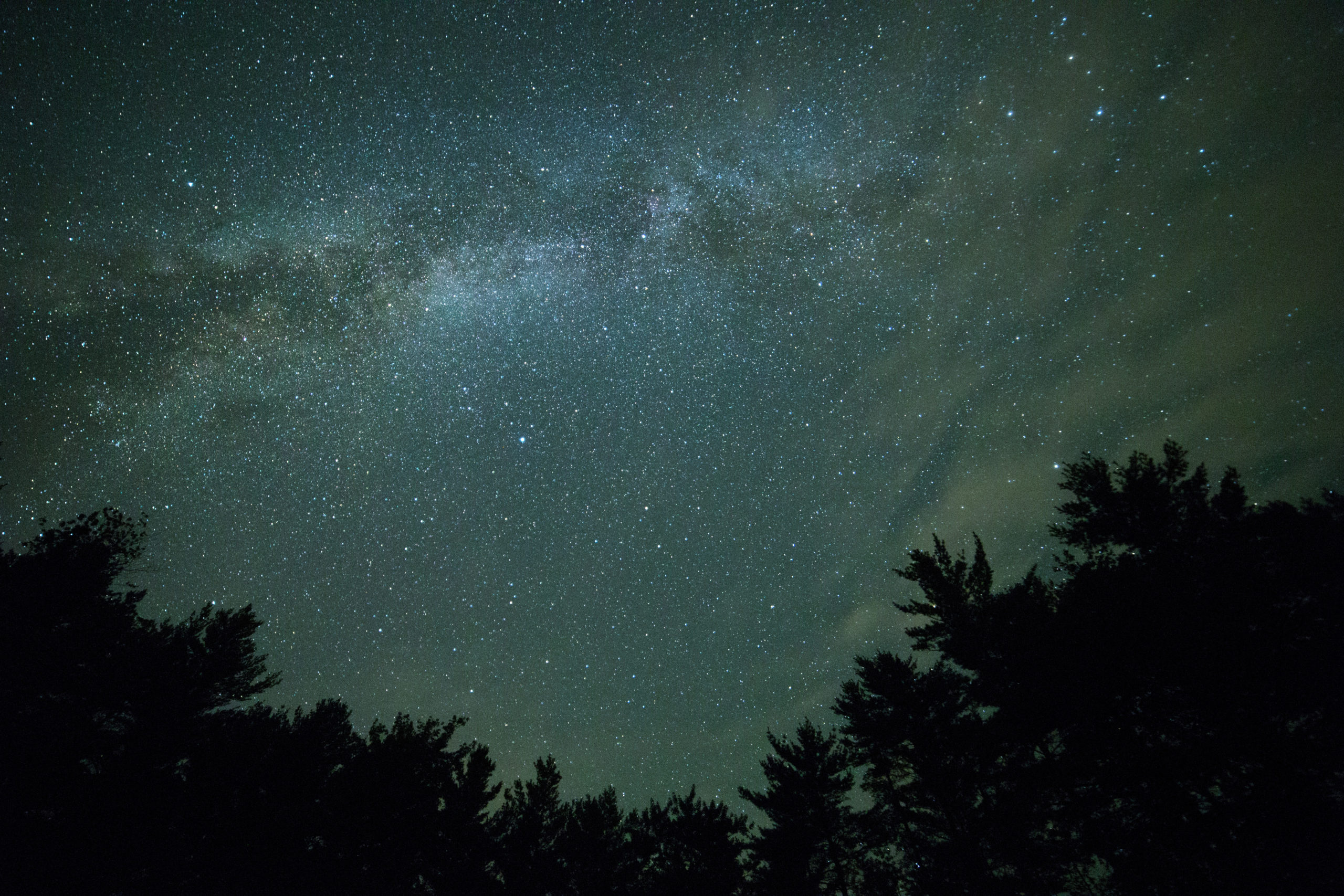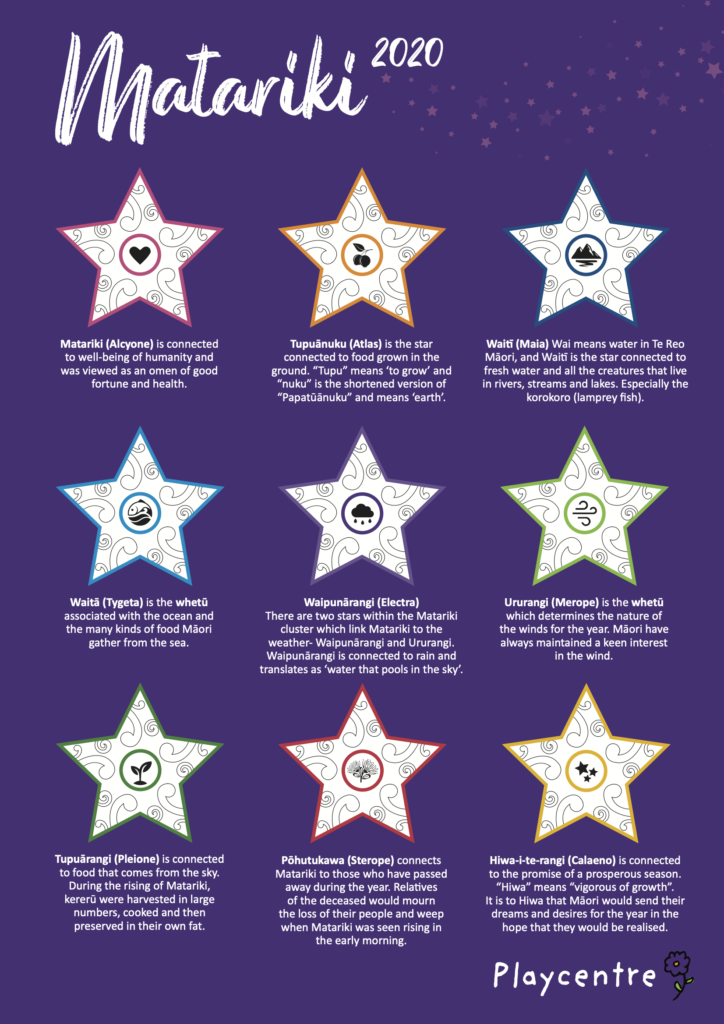MATARIKI and TĀKARO

“Matariki rere ki pae mahara”
“Matariki a time to remember and reflect”
Matariki is a special time, a time to go inward, a time to listen, to remember, to reflect. Matariki is also the Māori name for a cluster of stars, not a constellation, which is visible in our night sky at a specific time of the year. In June/July, Matariki will re-appear in the dawn sky – signaling the start of the Māori New Year. It is a time to spend with whānau and friends – to enjoy kai (food), waiata (song), tākaro (games), and haka.
The story of Matariki
There are many Matariki stories. Locally she is known as the daughter of Papatuanuku and Raumati. According to Māori mythology, when their children separated Ranginui, the skyfather and Papatūānuku the earth mother, Tāwhirimātea God of the winds became so angry he tore out his eyes and threw them into the heavens. This was the creation of Matariki.
Many cultures acknowledge Matariki but call it by other names: for example the Ancient Greek named the star cluster ‘Pleiades’ or ‘Seven Sisters’, the Japanese ‘Subaru’, and the Hawaiians ‘Makali’i.
The star cluster Matariki has, according to Dr Rangi Mātāmua, nine visible stars: Matariki, Tupuārangi, Waipuna-ā-Rangi, Waitī, Tupuānuku, Ururangi, Waitā, Pōhutukawa and Hiwa-i-te-Rangi. Each of those are holding a certain significance over our wellbeing and environment.

Some iwi use Puanga
Matariki’s reappearance in the north-east sky is not visible in all parts of New Zealand, especially in areas to the west of mountains. For some iwi in Taranaki and Whanganui, and on the West Coast of the North and South Island, the new year begins with the rising of Puanga. This is not a rejection of Matariki as many of these iwi will still refer to Matariki and the other names in the constellation in their tribal narratives – however, Puanga is given preference.
You can see Matariki for yourself.
From the 13th of July 2020, before sunrise around 6am, look to the north-east horizon. Find the constellation Tautoru, or Orion’s belt (here in Aotearoa also called ‘the pot’). Trace a line northwards from the three stars of Tautoru. Look for a faint sparkle of tiny dots, about the same width as Tautoru is long. This is the Matariki star cluster.
Compared with other star clusters, Matariki is close to Earth – but it’s still 440 light years away. You can see Matriki almost throughout the year. There is only one period, about a month, where the sun is blocking Matariki and we can’t see her. That is why we celebrate Matariki rising, this year 13th of July 2020, with the beginning of the Māori New Year.
Matariki and Tākaro
Traditionally, Matariki marks a moment in time where the autumn harvest was complete and the pātaka storehouses were full. This left free time for relaxation, family, and leisure. Which explains why Matariki is a time for coming together for renewal and celebration. We see Matariki also as a time where we can enjoy tākaro together with our tamariki and rangatahi. Celebrate the outdoors, celebrate the nature and celebrate free play.
- Learn about Matariki with fun activities like those in this Matariki pukapuka mahi (activity book).
- Listen to the story of ‘The Little Kiwi’s Matariki’ or ‘Daniel’s Matariki Feast’.
- Or Weave a Matariki star.
We hope this Matariki will be a nourishing time for you.

Nature and the outdoors have been a big part in my whole life and my siblings, and I were happy kids playing outside in the forest with all our neighborhood friends. As a yoga teacher and with a Master of Sport Science I am ever since very passionate about sports, play and all kind of healthy movement.

